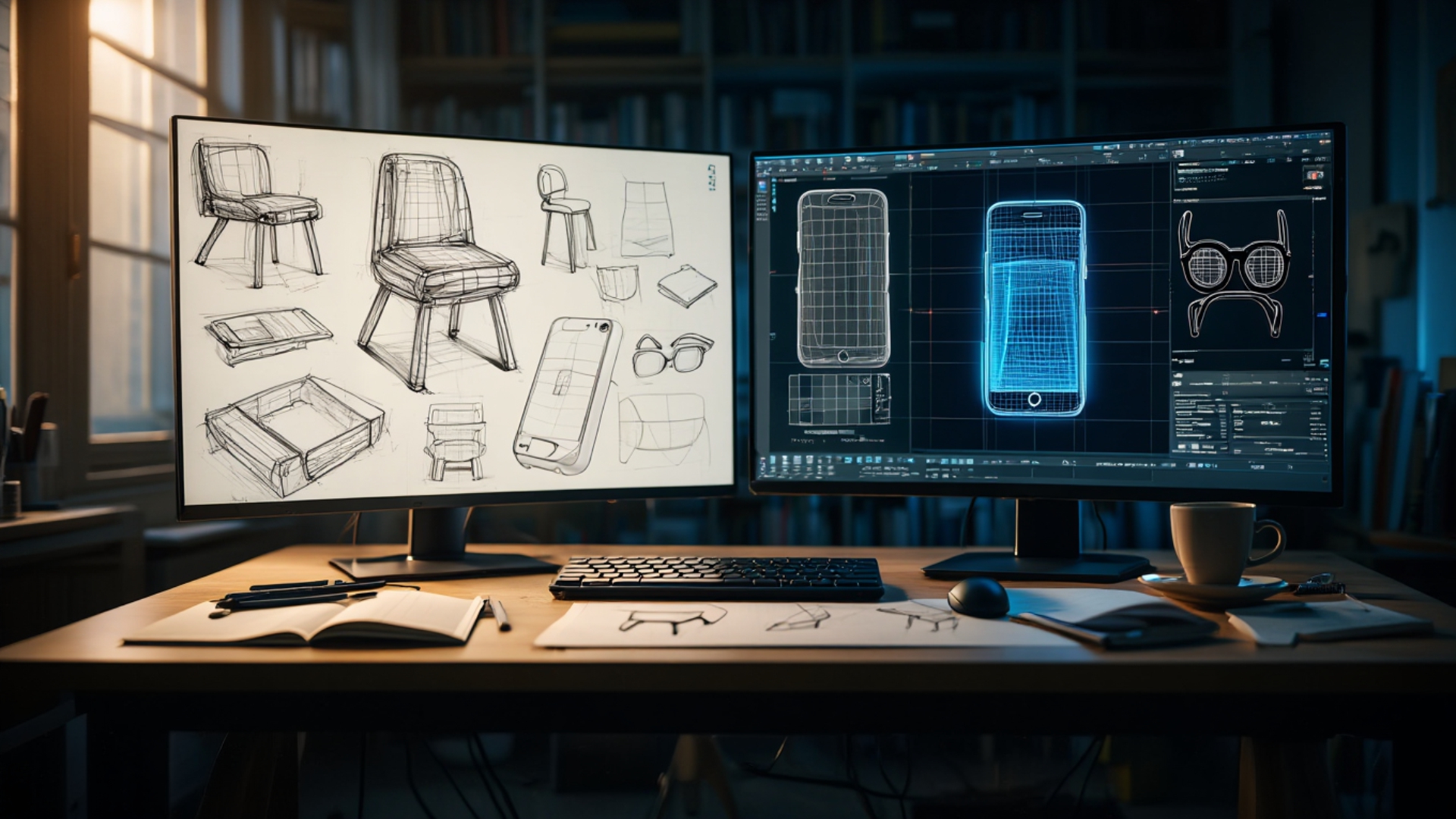


For centuries, design existed largely on paper and in physical models. Architects, engineers, and product designers relied on hand-drawn sketches, blueprints, and tangible prototypes to communicate their ideas. Every concept had to be imagined in three dimensions before it could be realized. While these methods showcased incredible skill and creativity, they were also limiting. Iterations were slow, perspectives could be misinterpreted, and sharing complex designs with clients or collaborators was often challenging. The emergence of 3D design changed all of this, creating a bridge between imagination and reality and opening a world of possibilities previously unimaginable.
Before computers, designers worked meticulously with pencils, rulers, and clay. Architects would spend hours perfecting scale models of buildings, while product designers created prototypes by hand, sometimes even carving them from wood or metal. Every adjustment meant starting over, and conveying complex spatial ideas to others required skill and patience.
Despite these challenges, early sketches were essential. They helped designers explore forms, proportions, and balance in ways that words alone could not convey. These sketches laid the groundwork for what would eventually become 3D design. They captured the spirit of creativity, even if the tools available at the time limited experimentation and speed.
The 1960s and 70s marked a turning point in the design world with the introduction of computer-aided design (CAD). Suddenly, designers could manipulate objects digitally, rotate them in three dimensions, and see perspectives that were difficult to achieve on paper. Initially, CAD was used primarily in engineering and automotive industries, helping create precise technical drawings.
Over time, CAD spread to architecture and product design, allowing professionals to visualize projects more accurately and efficiently. For the first time, a designer could experiment freely without the constraints of physical materials. This new digital approach not only saved time and resources but also offered a more realistic preview of the final product.
By the 1990s and early 2000s, 3D design tools became increasingly accessible. Software such as 3ds Max, Maya, and SolidWorks enabled creative professionals to explore modeling beyond technical fields. Industries like gaming, animation, advertising, and film started to adopt 3D as a vital part of their creative toolkit.
3D printing emerged during this time, turning digital models into physical objects. Designers could now prototype quickly, test functionality, and refine ideas in a fraction of the time it once took. This period of growth made experimentation faster, more affordable, and more precise, allowing creatives to focus on innovation rather than just technical execution.
Today, 3D design has entered a highly immersive era. Advances in rendering technology, photorealistic textures, and real-time visualization enable designers to create visuals that feel strikingly real. Augmented reality (AR) and virtual reality (VR) allow audiences to explore spaces, products, and narratives in ways that were once only imagined.
In branding and marketing, 3D has become an essential storytelling tool. A product can now be visualized interactively online, allowing consumers to see it from every angle, explore features, and even test customizations virtually. In film and gaming, 3D creates worlds that feel alive, with characters, environments, and objects responding in real time. Artificial intelligence is accelerating this process, assisting with modeling, texture creation, and animation, freeing designers to focus on creativity rather than routine tasks.
For example, a furniture brand can now provide an online 3D tool that lets customers “place” a chair in their living room virtually, while a car manufacturer can showcase different configurations of a vehicle in real time. These experiences make design not only more accessible but also more engaging.
Looking forward, 3D design will continue to reshape the way we experience the world. It will integrate seamlessly into e-commerce, virtual events, product customization, gaming, and immersive storytelling. Concepts like the metaverse and AR-driven experiences are pushing the boundaries of what is possible, proving that 3D is no longer just a visualization tool but a medium for creating memorable experiences.
The future of 3D will also emphasize collaboration. Designers, marketers, engineers, and clients can work together in shared virtual spaces, making decisions in real time. This collaborative approach will not only streamline workflows but also inspire innovation by bringing diverse perspectives into the creative process.
At Asense Branding, we have witnessed the evolution of 3D design from its earliest stages to the immersive experiences of today. Early adoption allowed us to visualize brand concepts more dynamically, helping clients see their ideas come to life in ways that sketches alone could not achieve.
Today, 3D design is central to our creative approach. It allows us to craft interactive campaigns, detailed product visuals, and immersive brand experiences that resonate with audiences. Whether it’s a digital product demo, a marketing animation, or an AR-powered interactive experience, 3D provides a new language for storytelling.
Looking ahead, we see 3D becoming a standard tool for all design thinking. It enables brands to communicate in ways that are visually compelling and emotionally resonant. At Asense, 3D is more than a design technique; it is a bridge between imagination and experience, connecting audiences with brands on a deeper level.
From hand-drawn sketches to fully interactive digital models, 3D design has transformed the creative landscape. It has opened doors to innovation, collaboration, and storytelling that were once unimaginable. At Asense Branding, we continue to explore its possibilities, helping brands turn ideas into tangible, immersive experiences that leave a lasting impact.